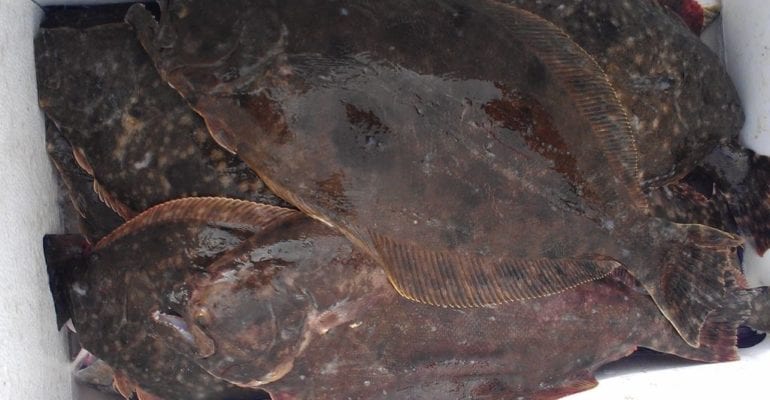Although there are 18 species of left-eyed flounder found in the Northern Gulf of Mexico, the Southern Flounder, Paralichthys lethosigma, which literally means “parallel fish that forgot its spots”, is the fish that most people on the Gulf coast think of when speaking of flounders. This fish is highly sought after by both commercial and recreational fishermen alike. Flounder are prized for their mild flavor and white, flakey flesh. A traditional Louisiana recipe is baked flounder stuffed with crabmeat dressing.
For most of the year, harvest is incidental as fish are scattered throughout the estuary system from totally fresh water in the upper reaches of river systems to the lower areas of the most salty bays. However, flounders do congregate in large schools just before and during migration offshore for spawning. The Southern Flounder migration in coastal Louisiana waters is close at hand. The nearest thing Louisiana has to a synchronized, en masse fish migration will begin in mid October and last only for a few weeks. The flounder migration out of the coastal estuaries is one consisting almost entirely of females. They move offshore to join up with male fish where they spawn in December and January. By, late February – early March the females return to the estuaries where they remain until the following fall. Male flounders stay in offshore waters year-round.
Male flounders are small, seldom growing larger than 10 to 12 inches, but the females grow larger and move longer distances. Females may reach 23 inches long or more, and spend most of the year in inshore waters, only migrating offshore during October to December to spawn. Excellent catches of flounder can be made during this period.
Female southern flounders spawn several times during their short annual spawning period, producing about 100,000 eggs each spawn. Spawning seems to be triggered by water temperatures of about 56 degrees F and usually occurs between 5 and 9 a.m.
After hatching, larval southern flounders grow most rapidly in highly saline waters. Young flounders begin to appear in Louisiana inshore estuaries between January and April, and range 1/4 inch to 2 inches in length. Like other fish, flounders hatch with one eye on each side of the head. Movement of the right eye to the left side of the head begins when the fish is 1/3 to 1/2 inch long and is complete when the fish is 3/4 inch to 1 inch long. At this same time, the left side develops its dark color and the right side turns white.
By: Kevin A. Savoie, extension agent, LSU AgCenter/Louisiana Sea Grant




